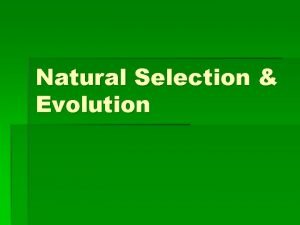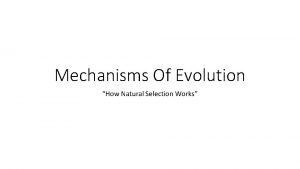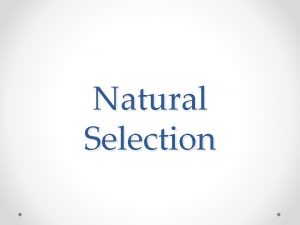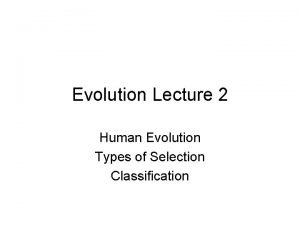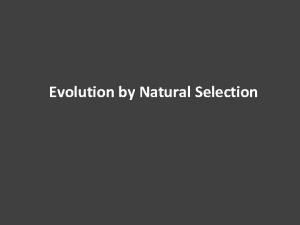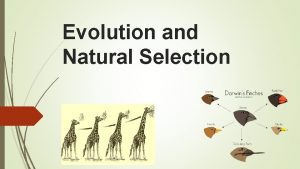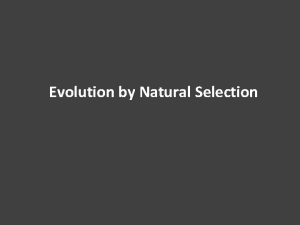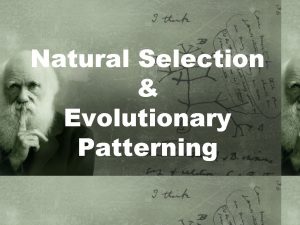Evolution Types of Natural Selection Natural Selection What









- Slides: 9

Evolution: Types of Natural Selection

Natural Selection: What We Know Populations are a mix of different individuals ◦ Genetic Variation Those individuals over reproduce ◦ Creating competition Not everyone survives Those best suited for their environment pass on their unique genes (traits) to their offspring Those genes increase in the population

Types of Selection Directional Selection: favors extremes Stabilizing Selection: favors the middle Disruptive Selection: nature favors extremes and middle is selected against Sexual Selection: increasing probability of reproducing Artificial Selection: humans get involved!

Directional Selection: favors trait at one extreme ◦ Often happens when environment changes in a consistent way (ex: gets colder) ◦ Peppered Moth ◦ Giraffe neck

Stabilizing Selection Selects against the extremes—middle is best Optimizes for environment ◦ Example: camouflage, human birth weight

Disruptive Selection Nature favors the extremes Middle is selected against ◦ Example: Daphnia and yeast infection ◦ Smaller daphnia are less susceptible to infection but produce less offspring ◦ Larger daphnia are more susceptible to infection but produce more offspring while alive

Sexual Selection Increases probability of reproducing ◦ Competition for passing on genes! ◦ Examples: male peacock feathers (attracting opposite sex) or intimidation of other males (eliminate same sex)

Artificial Selection Humans involved in breeding Nature no longer doing the selecting Examples: dog breeds, agricultural crops

Birth Weights 1 -1. 5: 2% 1. 5 -2: 6% 2 -2. 5: 6% 2. 5 -3: 13% 3 -3. 5: 35% 3. 5 -4: 32% 4 -4. 5: 15% 4. 5 -5: 4%
 3 types of natural selection
3 types of natural selection Mechanisms of evolutionary
Mechanisms of evolutionary Natural selection vs evolution
Natural selection vs evolution The slow gradual change in a species is called
The slow gradual change in a species is called Types of evolution
Types of evolution Artificial selection vs natural selection
Artificial selection vs natural selection Natural selection vs artificial selection
Natural selection vs artificial selection Artificial selection vs natural selection
Artificial selection vs natural selection Disruptivr selection
Disruptivr selection Natural selection vs artificial selection
Natural selection vs artificial selection
